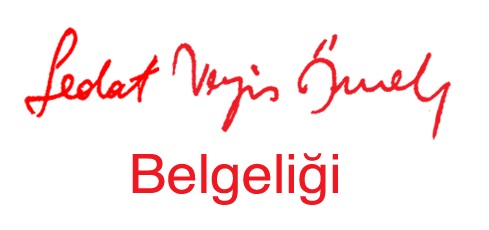Setting sail, again
The Workshop entitled “Between Religion and Language” continues the journey on which we set out three years ago at Nicosia with the First International Conference of Karamanlidika Studies. This time, with Karamanlidika Studies as our starting point, we have extended the range of our subject matter to include the parallel literatures of Armeno-Turkish, Hebrew-Turkish, Cyrillic-Turkish and Syro-Turkish because we consider that Karamanlidika book production should be studied within the framework of the common cultural life of the Ottoman Empire, in order to shed light on the conditions which generated this literature and its sister literatures. The number of common titles in Karamanlidika and Armeno- Turkish is impressive and constitutes priceless raw material for studies in comparative literature and linguistics.
Our aim is to study the parallel publishing activities and the circumstances that silenced each one. Basic political changes that abolished the pre-national backdrop of the Ottoman Empire were fated to bring about the disappearance of polymorphism in the scripts used to express the Turkish language by ethnic groups, the millets, in order to differentiate themselves from Muslims and from each other. The distinct, local identities died out during roughly the same period in which the Kemalist national state undertook radical measures regarding the abolition of the Arabic alphabet, which was understood as a symbol of the Ottoman imperial past.
What is frequently forgotten and goes unremarked in the process of naturalising the relationship between concepts of nation and language is that, though located at the opposite pole to Ottoman “polyglottism”, Karamanlidika, Armeno-Turkish and Hebrew-Turkish are not connected in a natural, genetic fashion. I have borrowed this formulation from the late Tassos Christidis, who used it to describe corresponding conditions in the Balkans (1).
The struggle among different cultures in the Ottoman Empire can be better comprehended through the expansion and contraction of the various alphabets than through the study of the languages used. An alphabet is indeed more closely connected with the learned literary tradition than is a language, and an alphabet is, of course, closely linked with religion, provided that the religion insists on a unique alphabet for the propagation of its sacred texts and doctrines. The choice of alphabet corresponds to religious inclusion, and as Bernard Lewis has perceptively observed: ‘Not language but script was the visible and outward sign distinguishing Muslim from the unbeliever’ (2). The adoption of a different script for writing the Turkish language added an extra element to the identity of those using it, just as it was an element of mutual recognition.
By inviting colleagues who study analogous themes we aimed at widening and exploring more deeply the scholarly horizons of those of us engaged in Karamanlidika Studies. I hope that this inclusive approach offers a similar service to those engaged in Armeno-Turkish Studies, Hebrew-Turkish, Cyrillic-Turkish, Syro-Turkish and even Aljamiado Studies and Frangochiotika (3). The goal of such meetings is to open channels of communication among us, so that we can all publicize the results of our studies and place them within a common framework. This common framework is needed so that we can underline the significance of phenomena which are not easy to comprehend in all their dimensions only through the one-sided observation of each literature separately. I believe that such scholarly gatherings prevent excessive introspection and hemming-in by underlying pre-conceptions, given that scholarly study may focus simply on the part, leading us to lose sight of, or not even consider, the whole.
Basic bibliographical corpora have already been prepared for publications in Karamanlidika, Armeno-Turkish and Frangochiotika (4), just to mention these three cases. But bibliographical research must proceed further and be extended to include publication activity in other traditions, because there are many gaps in the current state of our knowledge. The past year, as I worked for months in the Βaşbakanlık Osmanlı Arşivi (BOA) in order to collect material on Karamanlidika books and Karamanlidika publishing activity, I felt great satisfaction when I came across the file containing the permit for the circulation of Moise Fresco’s Hebrew-Turkish newspaper El Ustad, in Smyrna in 1888. It confirmed a bibliographical reference (5). In addition, I have been impressed by the huge volume of archival material that exists concerning Armeno-Turkish publications, and by the huge volume of data related to Turkish editions printed in different scripts by the Bible Society, the American Board of Commissioners for Foreign Missions and other organizations. Delving into the archival section entitled Ζaptiye brought to light previously unknown titles of newspapers and periodicals published in Karamanlidika, as well as valuable material for familiar print runs. The archives are a source of rare information concerning editions, circulation, censorship and other publishing controversies centered on books and periodicals.
These examples are cited not to show the historian’s gratification on discovering unknown material. They are meant to underline the prospects which are opening for research into these discrete literatures and, above all, to declare the current prospects for comparative studies. I insist on the necessity of archival research, not because it is some personal obsession, but because we need comprehensive documentation for the Turcophone, non-Muslim communities and their history, and for their cultural presence in the Ottoman Empire – and the archives offer us raw materials for fulfilling this need.
There are many questions seeking answers. For example: can we find traces of the settlements of the Turkish-speaking Rums and Armenians in Anatolia at the time of the Ottoman conquest? Can the network of settlements inhabited by this gayr-i muslim population at the end of the 15th and in the beginning of 16th century be identified with that known from the mid-19th century until the exchange of populations? When and how were communities of Turcophone Orthodox Anatolians created in the urban centres of the empire? What was the economic and political importance of these initial communities? What was their particular cultural identity until the early 19th century, when each community appeared with its own books, newspapers, periodicals, publishing houses, bookshops and schools? What is the number of common titles that circulated in the three alphabets? Which novels circulated in Turkish, printed in the Ottoman, Greek and Armenian scripts? Do the books printed in the Cyrillic alphabet, aimed mainly at the Gagauz people of the Balkans, derive exclusively from Karamanlidika editions? Can we observe in these texts differences in the Turkish language which distinguish it from Karamanlidika? Only investigations motivated by questions of this kind will allow us to understand the distinctive presence of this non-Muslim world within the Ottoman Empire, relations inside and outside the millets, and routes of communication chosen by fellow citizens of the same religion and different religions. We await studies of this type. So, let us start by proceeding slowly but surely in our studies of the polymorphism of the scriptural idioms of Turkish, or the cultural choices of each nationality, as these can be detected in their publication activities. There is much work to be done, work that demands collaboration, coordination of knowledge, brainpower and resources for the scholarly approach to an issue which has not enjoyed the happiest handling to date. The program of the conference “Between Religion and
The program of the conference “Between Religion and Language” did not assemble a full range of topics related to the history of scripts used to represent the Turkish language in the Ottoman period, nor did it cover all the scripts used in the Ottoman Empire. We took a first step by expanding our field of research beyond Karamanlidika publishing activity. The organization rested on the participation of distinguished scholars who assured the success of what proved to be an important working meeting. Both in the discussions following the presentations and in the interstices, many desiderata were aired, inspired by progress already made in research concerned with Karamanlidika and Armeno-Turkish printed material. The additional commissioned papers cover the serious gaps that were apparent at the meeting in June. Our purpose is, as always, to keep open the agenda and stimulate the scholarly debate which has begun and which we intend to develop with all our powers, and in as many ways as possible. The aim of this meeting in June was to set the company talking. We hope that the dialogue will now continue among those who read the printed versions of our talks.
I thank all who have believed in the necessity of a meeting such as this one, and those who accepted our invitation. I thank all those who have helped in the various phases of its organization. I thank the friends who agreed to assist our effort financially and in other ways. A special tribute is owed to Elizabeth Key Fowden, who edited the papers in English, and to Danielle Morichon did the same for the papers in French.
(1) See Αnastasios-Phoivos Christidis, "Prologising the Conference : Language, Society, History", in Language, Society, History: The Balkans, Α.-F. Christidis (ed.), Thessaloniki 2007, 27
(2) Bernard Lewis, The Emergence of Modern Turkey, Oxford University Press, 21968, 426.
(3) In books published in the last two, Aljamiado and Frangochiotika, the Greek language was printed, respectively, in Arabic or Latin characters to be used, again respectively, by Greek-speaking Muslims or the (Catholic) Levantines in the Ottoman Empire. Books were also published in Latin characters for Armenian Catholics. In the BOA, I have found a considerable number of documents referring to such Armenian publications. In the catalogue of the archive they are referred to as books printed with Fransiz harf, in other words, in European characters. Obviously in the Ottoman document the word Frenk is used.
(4) Eugène Dalleggio, “Bibliographie analytique d’ ouvrages religieux en grec imprimés avec des caractères latins”, Μικρασιατικά Χρονικά 9 (1961), 385-499. It was not coincidental that at the same time Dalleggio was occupied with assembling the bibliography of Karamanlidika books. He was interested both the spiritual and the cultural presence of the different millets in the Ottoman Empire.
(5) When I announced my discovery to Rifat Bali he searched at once for the newspaper in libraries in Israel, where finally he discovered issues and procured copies for me. I thank him warmly. Ι have, in turn, handed over all the documentation to Laurent Mignon. In the meantime, while investigating the Ottoman Archive in Istanbul for readers of Karamanlidika publications, I discovered that on March 29, 1897, permission was granted for the circulation in Smyrna of another Hebrew-Turkish newspaper, with the name Μeserret (ΒΕΟ 937). One year later (8/11/1898) permission was granted for the publication of Ceride-i Lisan in Istanbul. It circulated twice a week, see ΒΟΑ (IRADE Dosya 1364 and ΒΕΟ 1312). Clearly what we need is systematic research. We can be sure to find more titles than these three, discovered by chance.
Gazeteler
Kitaplar
Bildiriler
Yabancı Dergiler
Web Siteleri
Videolar
Belgeler
Halkevi Dergileri
Yazarlar
İletişim: ilhaner@ilhaner.com

* Hayrettin İvgin
* İlhan Başgöz
* Muhsine Helimoğlu Yavuz
* Orhan Acıpayamlı
* Pertev Naili Boratav
* Sabri M. Koz
* Sedat Veyis Örnek
* Vahit Lütfi Salcı

